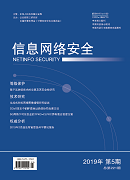Nowadays, with the increasing frequency of network transactions and the emergence of various network transaction systems, the security of network transactions is facing many challenges, and it has become a research hotspot in the field of information security. It is of great significance to ensure the security of network transactions. In view of the need for transaction security, blockchain technology is gradually being studied and adopted in the fields of finance, market and economy. In this paper, the basic knowledge of blockchain technology, transaction structure, working mode and the process of blockchain investment and transaction are analyzed and studied, and an investment and transaction platform based on Ethereum blockchain technology is constructed. Smart contract is adopted on this platform. In this paper, the development and implementation process of the system are discussed in detail, the whole transaction process is displayed, the security problems of the transaction process and the security problems of the samrt contract itself are discussed and analyzed, and the availability of the investment trading system is verified by experiments.

